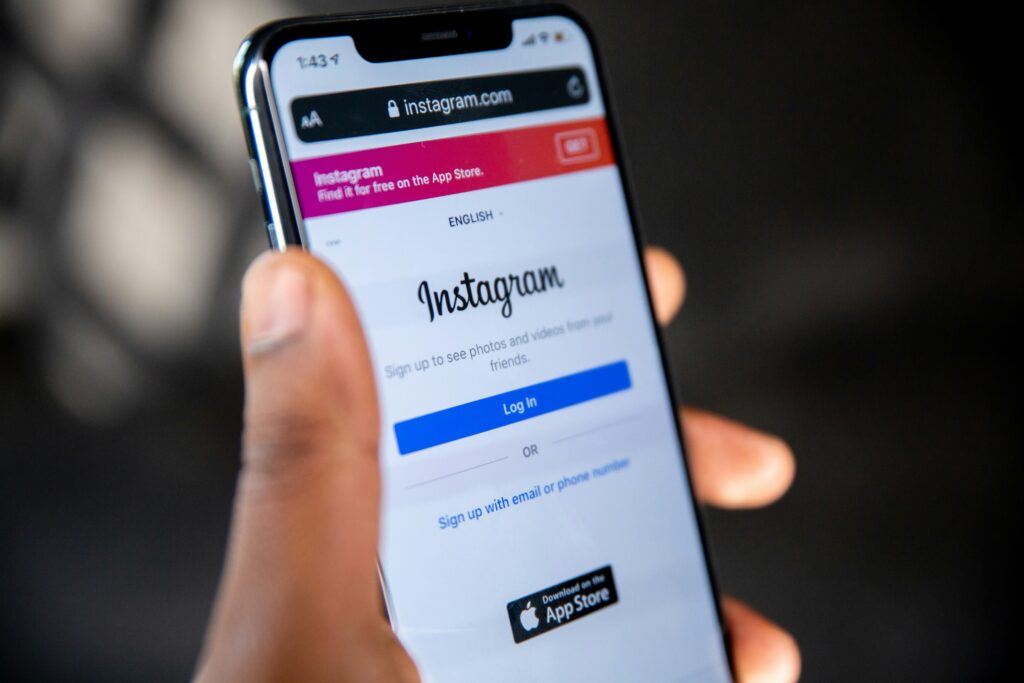1. Beyond Business Cards: Why Personal Style Matters in B2B Branding
In the world of B2B, branding often leans heavily on logic, metrics, and professionalism — which makes it easy to overlook something deeply human: personal style. But here’s the truth: even in industries where contracts are long, decision-makers are analytical, and buying cycles are slow, people still do business with people. And personal style — visual, verbal, and energetic — is your brand’s first handshake.
For women in business, personal style is more than fashion or fonts. It’s the outward expression of inward clarity. It’s how you visually signal your values, leadership, and essence before you say a word. Think of it as your brand’s non-verbal language — one that can immediately communicate presence, professionalism, creativity, or confidence.
In B2B environments, where standing out often feels counter cultural, your style becomes your edge. It allows you to:
- Be memorable in a sea of sameness.
- Attract the right clients, collaborators, and opportunities.
- Show consistency across touch points — from a Zoom call to your LinkedIn banner.
But here’s the key: style doesn’t need to scream to speak powerfully. Whether your aesthetic is bold and vibrant, minimalist and elegant, or earthy and textured — what matters most is alignment. When your outward expression reflects your inner truth, your brand feels effortless and magnetic.
How to Define Your Signature Brand Style
- Start with your personal energy.
Are you calm and grounding? High-energy and visionary? Reflective and intuitive? Your style should mirror the essence you bring into a room — not just what you think looks “professional.” - Create a visual brand mood board.
Collect visuals — from color palettes, wardrobe pieces, quotes, websites, or interiors — that feel like your brand. Look for patterns. This becomes your visual compass. - Consider your business context.
If you serve corporate clients, your style may lean toward polish and clarity. If you’re in creative industries, a more expressive look may work. The goal is to be yourself, but also strategically visible. - Keep it cohesive across platforms.
Your brand visuals should speak the same language wherever someone finds you — whether that’s your LinkedIn profile, your pitch deck, or your head shots. Consistency builds trust.

When you feel aligned in how you show up visually, your confidence naturally increases. You stop second-guessing what to wear to events, how to present yourself on camera, or what vibe your website should convey. Instead, you own your presence — and others feel it too.
And let’s be clear: style is not superficial. It’s strategic. It’s how you introduce your brand before your brand speaks.
In B2B, your business card may open the door — but it’s your style that invites people in. And when your style reflects not just what you do, but who you are, your brand becomes unforgettable.
Because the most magnetic women in business don’t just dress the part.
They embody it — with intention, authenticity, and power.
2. Tell, Don’t Sell: Crafting a Brand Story That Connects
Behind every successful B2B brand is a story — not just about what the business does, but about why it exists, who’s behind it, and what it stands for. For women in business, storytelling is one of the most powerful tools for creating a magnetic personal brand. But in the pressure to appear “professional,” many women default to sterile bios and generic mission statements that lack depth, emotion, and humanity.
The truth is: facts inform, but stories connect. In B2B, where relationships often take time to build, your story becomes the bridge. It turns your services into a narrative. It gives your audience — clients, partners, investors — something to feel, not just analyze.
But this doesn’t mean oversharing or making everything personal. It means crafting a strategic story that humanizes your brand while reinforcing your credibility.
Why Storytelling Works in B2B
- It builds emotional resonance. People remember feelings, not features. A great story stirs emotion — even in logic-driven industries.
- It differentiates you. Your story is your fingerprint. No one has your exact journey, perspective, or reason for doing what you do.
- It creates trust. Storytelling builds rapport and reputability — especially in spaces that often feel formal or detached.
What Goes Into a Magnetic Brand Story?
- Your “why”
Why did you start your business? What problem moved you enough to create a solution? Go deeper than the job description — tap into the purpose behind it. - Your evolution
What turning points shaped you? What lessons have you learned? This doesn’t have to be dramatic — even quiet pivots tell a powerful story. Highlight resilience, growth, and transformation. - Your values
Weave in the principles that guide your business. Whether it’s collaboration, innovation, inclusivity, or excellence — let your story reflect what matters most to you. - Your clients’ journey
Include a narrative arc that mirrors your audience’s experience. Speak to their pain points, dreams, and the transformation you help facilitate.

Telling Your Story with Confidence
- Keep it conversational. Write the way you speak. Let your voice — not industry jargon — come through. This makes your story more engaging and accessible.
- Use visuals and metaphors. Don’t just tell us you’re “passionate about strategy” — paint a picture. “I help women-led brands go from scattered ideas to laser-focused messaging that feels like home” is far more compelling.
- Practice sharing it out loud. The more you tell your story (on podcasts, panels, interviews, or in pitches), the more comfortable and refined it becomes. Your story is a living asset — it should evolve with you.
Your brand story doesn’t have to be dramatic.
It just has to be true, clear, and felt.
Because the women who build the most magnetic B2B brands aren’t the ones with the flashiest websites — they’re the ones who know how to connect. And that connection starts not with a pitch, but with a story.
3. The Strategy Behind the Sparkle: Systems, Platforms & Positioning
Personal branding may begin with style and story, but it’s strategy that brings it to life — and keeps it alive. For women building B2B brands, especially in high-trust industries, it’s not enough to be visible; you need to be positioned. That means creating intentional systems, choosing the right platforms, and showing up where it matters most — in a way that aligns with your energy and goals.
The most magnetic personal brands don’t happen by chance. They’re backed by structure, even if they feel effortless. Behind every polished brand is a strong foundation of strategy — one that lets the brand scale, evolve, and attract opportunities without constant burnout.
Let’s break down how to bring strategy into your brand with clarity and grace.
1. Define your unique positioning
Before you dive into platforms or content plans, start here:
- What problem do you solve?
- Who are you solving it for?
- Why are you the best person to do it?
The answers to these questions form the core of your positioning. In B2B branding, clarity equals credibility. If your audience can’t quickly understand what you do and why you’re different, they’ll scroll past — or worse, forget you.
Your positioning should reflect your expertise and your personality. It’s what allows your brand to stand tall in a crowded market without having to scream.
2. Choose your platforms with purpose
You don’t need to be on every social media app or in every networking circle. You just need to be where your ideal audience is — and where you can show up consistently.
- LinkedIn is ideal for B2B authority building, especially when used to share value-driven insights, client wins, or thoughtful commentary on industry trends.
- Email marketing allows you to nurture warm leads with more depth and intimacy.
- Speaking engagements, guest podcasts, or webinars can position you as a thought leader without the need for daily online presence.
Strategy is about choosing fewer, better platforms and optimizing them.
3. Build systems that support your brand
You don’t need to reinvent your content every week. Develop systems that support sustainable visibility:
- Content batching: Plan and create your posts, blogs, or emails in advance during high-energy windows.
- Repurposing: Turn one story into multiple content pieces across channels.
- Templates & workflows: Use design templates, email sequences, and publishing checklists to streamline execution.

Systems allow you to maintain consistency without draining your creative energy. That’s especially important for women managing both business and life.
4. Align strategy with your energy
The best strategy is one that feels good to follow. If daily video drains you, try written content. If social media feels chaotic, shift your focus to long-form assets like blogs or webinars.
Strategic branding doesn’t mean fitting into someone else’s playbook — it means designing one that fits your rhythm, goals, and lifestyle.
At the heart of it, strategy is what makes your style and story work for you.
It turns your presence into positioning, your content into conversion, and your brand into a business asset.
Because a magnetic brand isn’t just beautiful.
It’s built to last.
4. From Polished to Profitable: Owning Your Brand With Confidence
You’ve defined your style. You’ve told your story. You’ve mapped out your strategy. Now comes the most important — and often the most vulnerable — part: owning it.
Many women in business spend months perfecting their brand assets, only to hesitate when it’s time to put themselves forward. But no amount of polish can replace what truly makes a personal brand magnetic: confidence. Not confidence as in bravado or perfection — but confidence as in clarity, consistency, and ownership.
Because here’s the truth: a profitable brand doesn’t just look good. It feels lived-in. It radiates certainty. And it invites others to trust, invest, and connect — because the woman behind it clearly trusts herself.
Confidence is the currency of personal branding
Clients, partners, and peers aren’t just buying your offer.
They’re buying into your certainty:
- Your certainty in the value you provide.
- Your certainty in your voice and vision.
- Your certainty in the transformation you can deliver.
This kind of confidence is built — not bought — and it begins with giving yourself permission to take up space.
Here’s how to own your brand with confidence:
- Rehearse your brand out loud.
Practice introducing yourself, sharing your story, or pitching your offer in a way that feels embodied. Record yourself. Speak on podcasts. Join panels. The more you say it, the more it becomes you. - Show up with consistency — not perfection.
Confidence grows through doing. You don’t have to launch big or post daily to be seen as credible. Even one intentional appearance a week — a LinkedIn post, an email, a behind-the-scenes share — creates momentum. - Celebrate the quiet wins.
Did a potential client respond to your story? Did someone say your content inspired them? These small affirmations are proof your brand is resonating. Collect them. Reflect on them. Use them as fuel. - Protect your boundaries.
A confident woman doesn’t just know how to show up — she also knows when to step back. Protect your creative energy. Say no to what dilutes your message. Choose partnerships and platforms that align with your integrity. - Treat your brand like a business asset.
Your personal brand is more than marketing — it’s leverage. It can open doors, attract aligned clients, create speaking opportunities, and generate income long after you’ve left the room. Start treating it like a long-term investment, not just a vanity project.
From Polished to Profitable: The Shift
There comes a point in every woman’s branding journey when she stops trying to be seen — and starts claiming her space. That’s the turning point between polished and profitable. It’s no longer about proving. It’s about embodying.
You don’t need to be the loudest. You don’t need to be everywhere.
You just need to be aligned, authentic, and anchored in your value.
Because the most magnetic brands are built by women who know who they are — and are no longer afraid to let the world see it.


